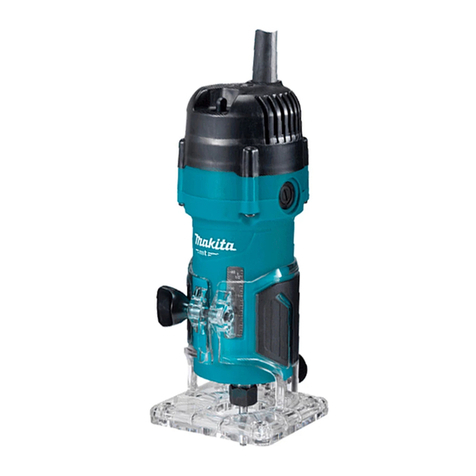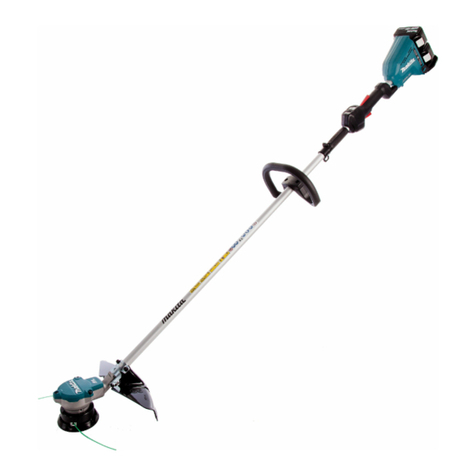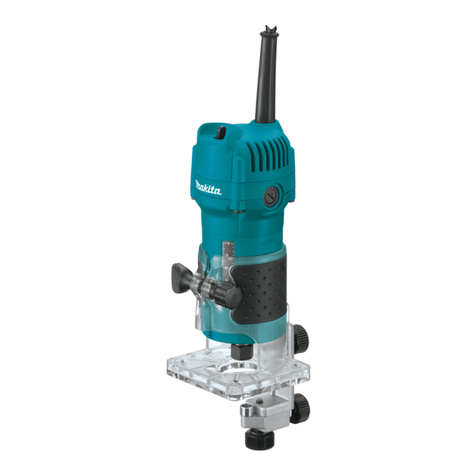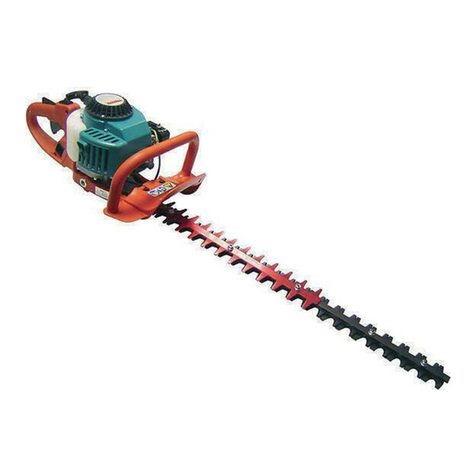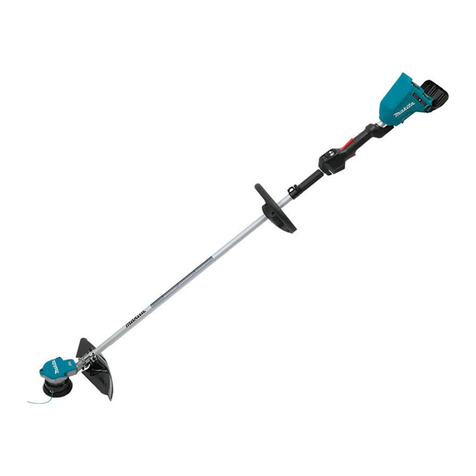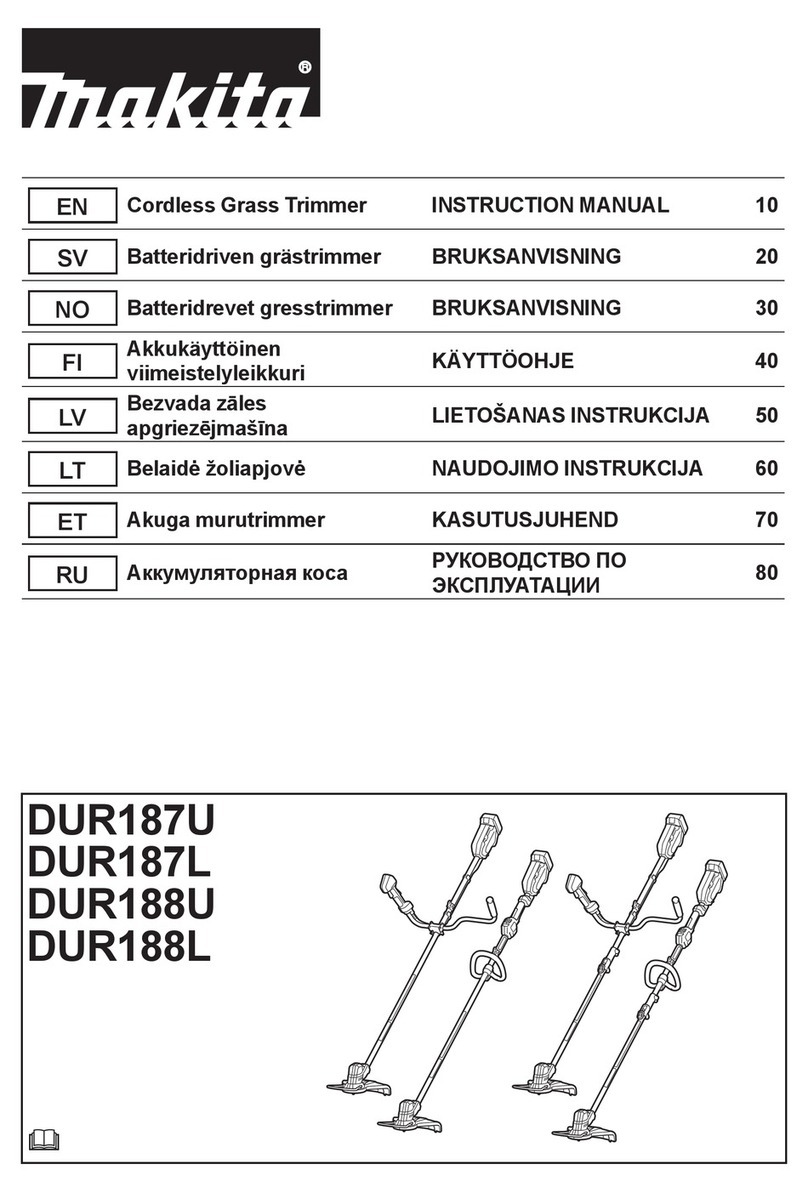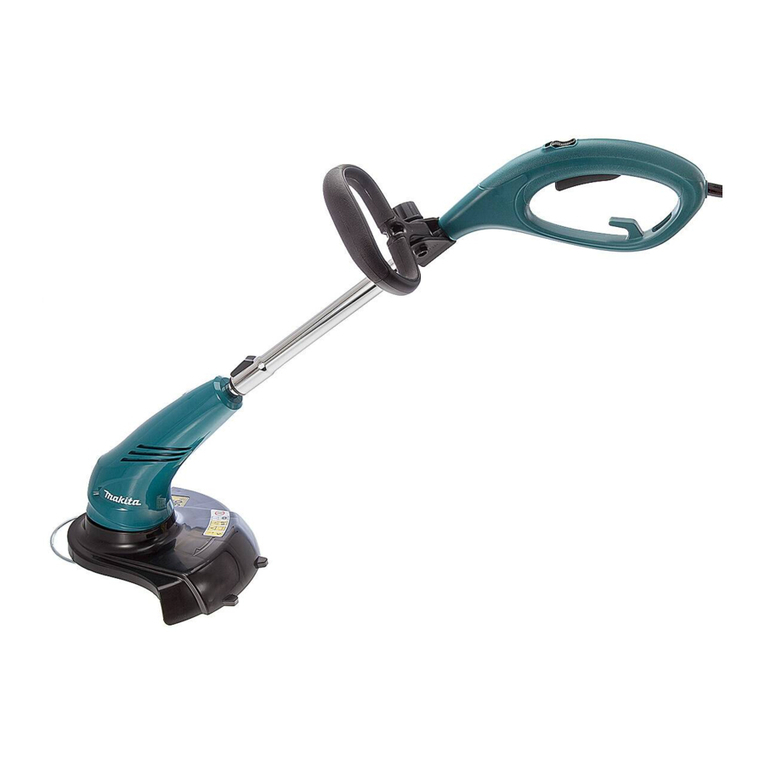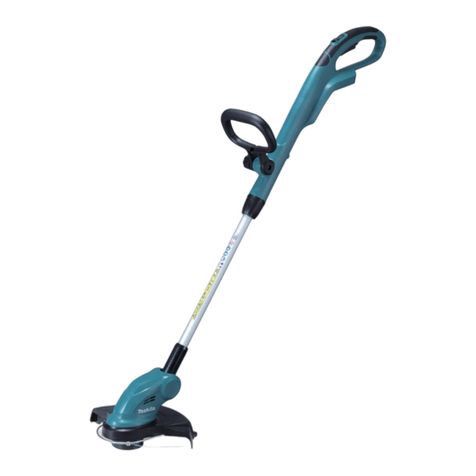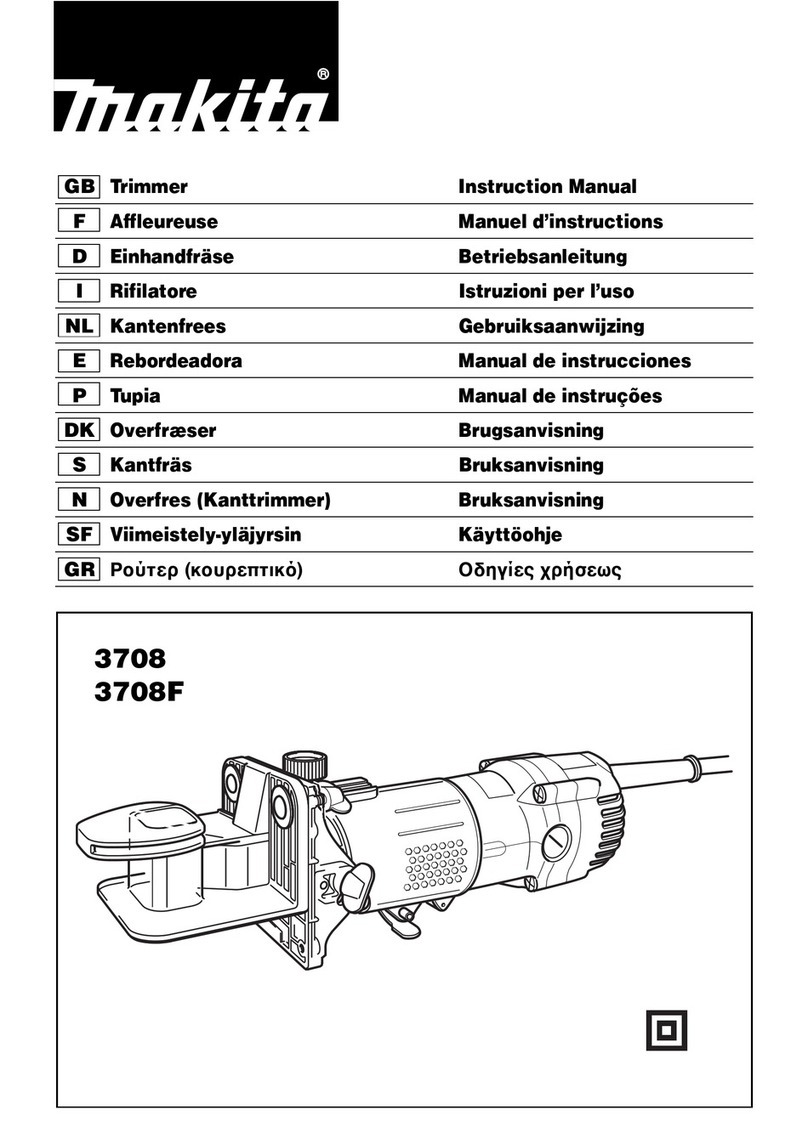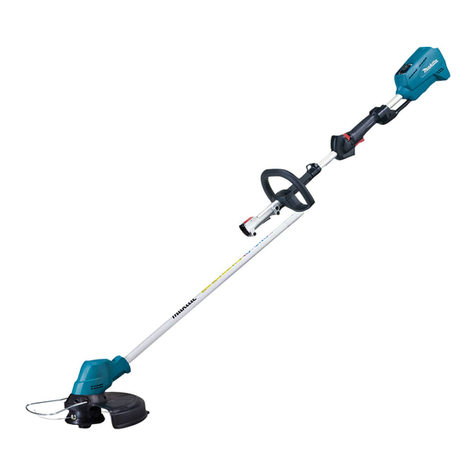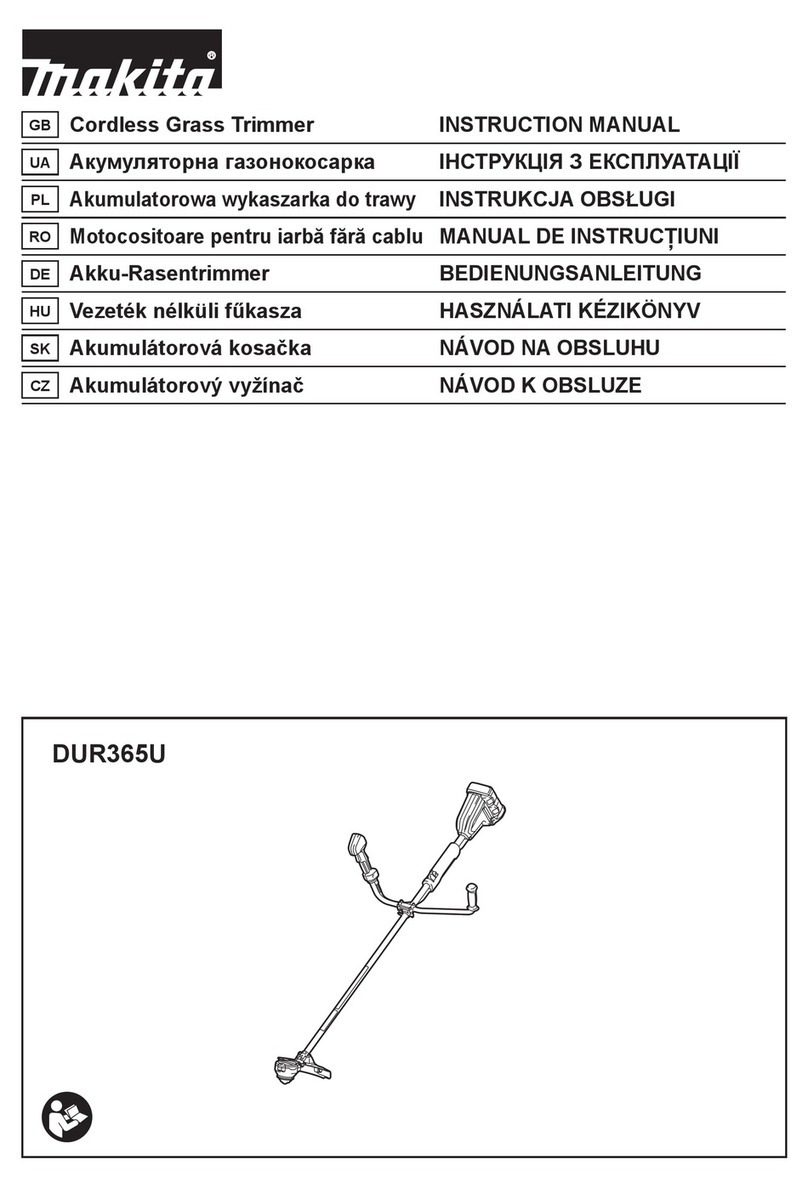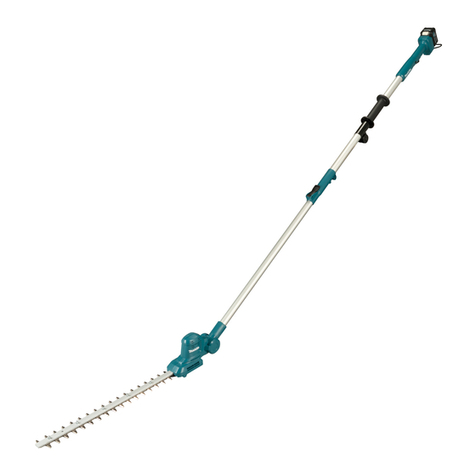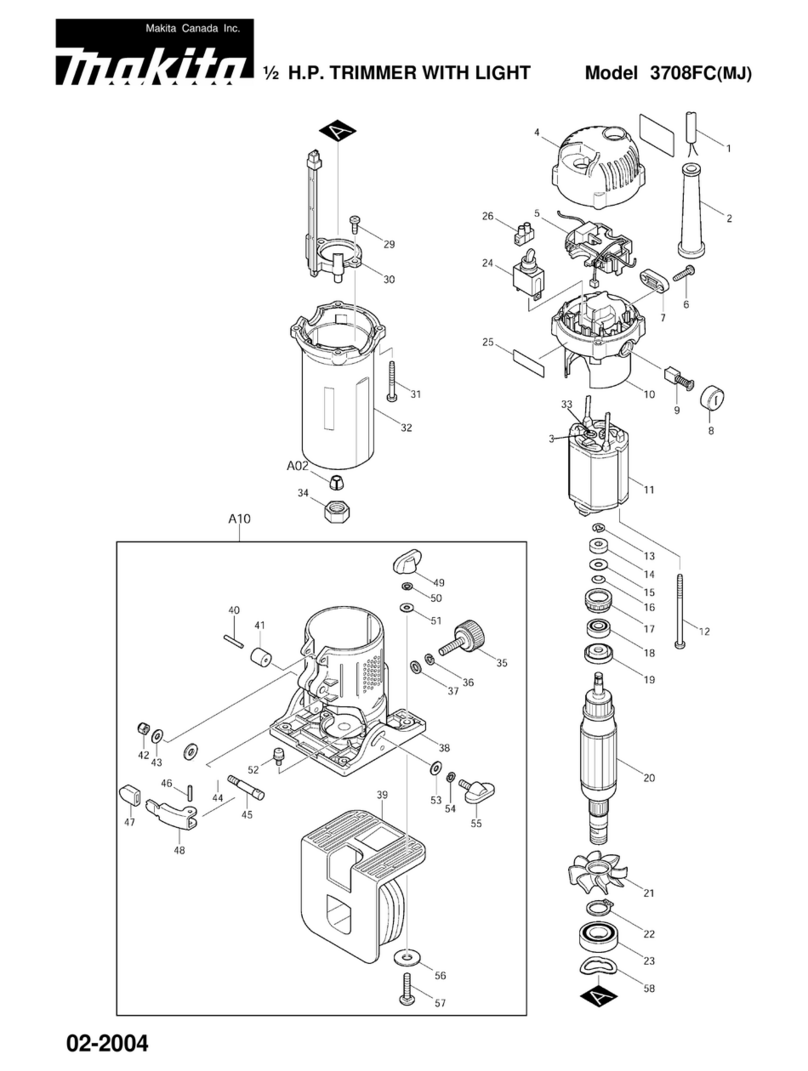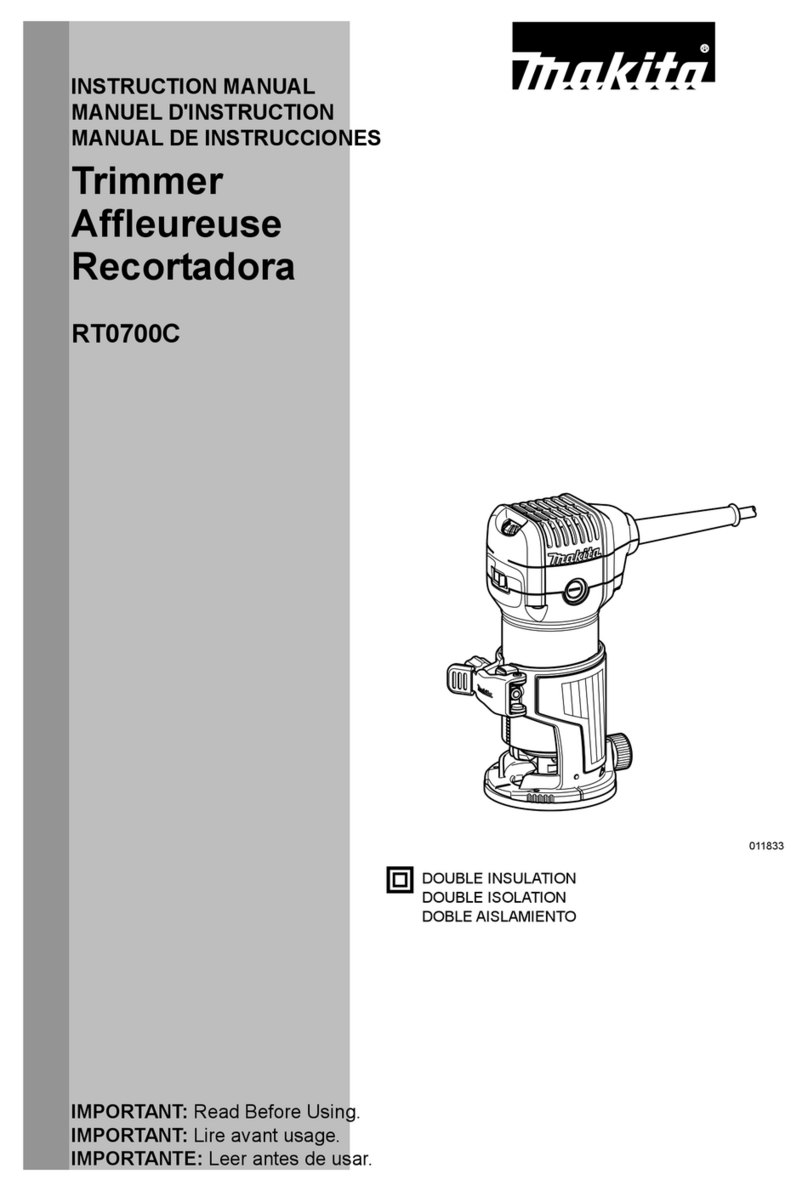4
branches, stones etc. as the nylon cutting head
will revolve when starting.
Method of operation
1. Only use the tool in good light and visibility.
During the winter season beware of slippery or
wet areas, ice and snow (risk of slipping). Always
ensure a safe footing.
2. Take care against injury to feet and hands from
the nylon cutting head.
3. Never cut above waist height.
4. Never stand on a ladder and run the tool.
5. Never climb up into trees to perform cutting
operation with the tool.
6. Never work on unstable surfaces.
7. Remove sand, stones, nails etc. found within the
working range. Foreign particles may damage the
nylon cutting head and can cause dangerous
kick-backs.
8. Should the nylon cutting head hit stones or other
hard objects, immediately switch off the motor
and inspect the nylon cutting head.
9. Before commencing cutting, the nylon cutting
head must have reached full working speed.
10. Operate the tool only with the shoulder harness
attached which is to be suitably adjusted before
putting the tool into operation. It is essential to
adjust the shoulder harness according to the user
size to prevent fatigue occurring during use.
11. During operation always hold the tool with both
hands. Never hold the tool with one hand during
use. Always ensure a safe footing.
12. The nylon cutting head has to be equipped with
the guard. Never run the tool with damaged
guards or without guards in place!
13. All protective equipment such as guards and the
shoulder harness supplied with the string trimmer
must be used during operation.
14. Except in case of emergency, never drop or cast
the tool to the ground or this may severely
damage the tool.
15. Never drag the tool on the ground when moving
from place to place, the tool may become
damaged if moved in this manner.
16. Always remove the battery cartridge from the tool:
−whenever leaving the tool unattended;
−before clearing a blockage;
−before checking, cleaning or working on the
tool;
−whenever the tool starts vibrating abnormally.
17. Always ensure that the ventilation openings are
kept clear of debris.
Maintenance instructions
1. The condition of the nylon cutting head, protective
devices and shoulder harness must be checked
before commencing work.
2. Turn off the motor and remove the battery
cartridge before carrying out maintenance,
replacing the nylon cutting head or nylon cord
and cleaning the tool.
3. Check for loose fasteners and damaged parts
such as cracks in the nylon cutting head.
4. Follow instructions for lubricating the string
trimmer.
5. When not in use store the equipment in a dry
location that is locked up or out of children's
reach.
6. Use only the manufacturer's recommended
replacement parts and accessories.
7. Inspect and maintain the tool regularly, especially
before/after use. Have the tool repaired only by
our authorized service center.
8. Keep handles dry, clean and free from oil and
grease.
SAVE THESE INSTRUCTIONS.
WARNING:
DO NOT let comfort or familiarity with product
(gained from repeated use) replace strict adherence
to safety rules for the subject product. MISUSE or
failure to follow the safety rules stated in this
instruction manual may cause serious personal
injury.
USG001-2
WARNING:
Use of this product can create dust containing
chemicals which may cause respiratory or other
illnesses.
Some examples of these chemicals are compounds
found in pesticides, insecticides, fertilizers and
herbicides.
Your risk from these exposures varies, depending on
how often you do this type of work. To reduce your
exposure to these chemicals: work in a well ventilated
area, and work with approved safety equipment, such
as those dust masks that are specially designed to filter
out microscopic particles.
